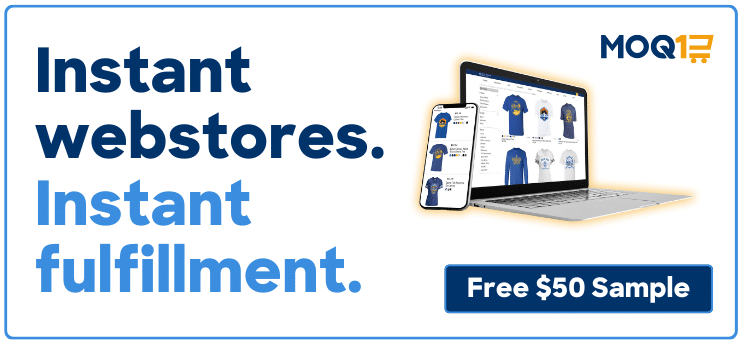Industry leaders anticipating relief from Trump-era tariffs had their hopes dashed on Tuesday, as the Biden administration announced tariff increases on $18 billion worth of imports from China, which is where most promotional products in the United States and Canada come from.
Additionally, Biden is maintaining the levies enacted by his predecessor on more than $300 billion worth of imports.
- China’s commerce ministry responded by saying that Beijing opposed the tariff hikes and would take measures to defend its interests, Reuters reported.
Although the Biden administration claims that the tariff increases will ensure that American job creation isn’t “undercut by a flood of unfairly underpriced exports from China,” Ben Zhang, president and CEO of Greater Pacific – ranked the No. 68 supplier in the 2024 PPAI 100 – argues that “tariffs just increase prices, create inflation and harm the U.S. consumer.”
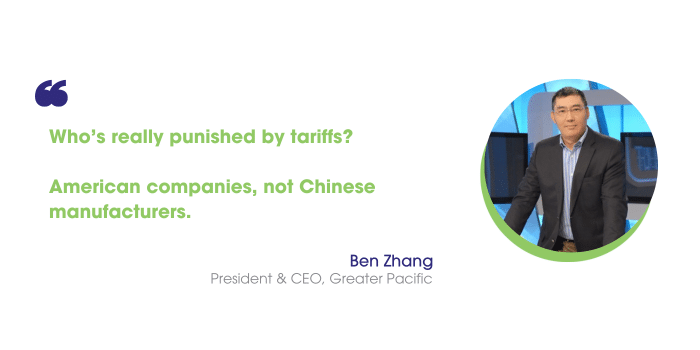
“Who’s really punished by tariffs? American companies, not Chinese manufacturers,” Zhang says.
- In 2023, the U.S. imported more than $427 billion in goods from China and exported nearly $148 billion to the world’s second largest economy, according to the U.S. Census Bureau.
“This industry relies on significant manufacturing in China,” adds Thomas Goos, MAS, president of Image Source – ranked the No. 48 distributor in the inaugural PPAI 100. “There will be increased costs from these new tariffs, and we could lose sales. It’s not good for our industry.”
What Items Are Impacted By The Tariffs?
The Biden administration said that the increased tariff rates will apply to:
- steel and aluminum products (rising from 7.5% to 25% this year)
- battery parts (from 7.5% to 25% this year)
- electric vehicles (from 25% to 100% this year)
- solar cells (from 25% to 50% this year)
- ship-to-shore cranes (from 0% to 25% this year)
- semiconductors (from 25% to 50% by 2025)
- natural graphite (from zero to 25% in 2026)
- other critical minerals (from 0% to 25% this year)
- permanent magnets (from zero to 25% in 2026)
- syringes and needles (from 0% to 50% this year)
- personal protective equipment (PPE) like respirators and face masks (from 7.5% to 25% this year)
- rubber medical and surgical gloves (from 7.5% to 25% in 2026)
For the promo industry, the most notable tariff increase is for steel and aluminum products, which will climb from 7.5% to 25% this year. Those items are often used in industry staples, such as reusable drinkware and pens.
Cheron Coleman, vice president of private brand product development and global supply chain at alphabroder – ranked the No. 2 supplier in the 2024 PPAI 100 – says the tariffs’ impact on promotional products will vary depending on specific product categories.
“Suppliers and distributors of multi-tools, drinkware (such as tumblers and travel mugs) and tech gadgets (such as USB drives and phone stands) made of Chinese aluminum or steel should closely monitor developments and make necessary adjustments, if needed,” Coleman says.

Although Trump-era tariffs had already played a significant role in several promo firms moving their production out of China, Zhang estimates that 90% of the industry’s drinkware still comes from the country. As an importer, Zhang says that tariff increases ultimately get passed onto the consumer.
“We have to build the tariff cost into our price and pass it onto our customers,” he says. “Suppliers pass it onto distributors, who then pass it onto end users.”
- As of March 2024, $230 billion has been paid – half by American consumers and half by American businesses – in Section 301 tariffs since they have been implemented by the Trump administration, according to U.S. Customs and Border Protection (CBP)
- The “Section 301” tariff exclusions on 352 Chinese import and 77 COVID-19-related categories are set to expire on May 31, 2024.
Matt Wagner, vice president of sales at Fields Manufacturing – ranked the No. 80 supplier in the 2024 PPAI 100 – anticipates periodic price increases over the next 12 to 18 months.
“The bigger impact I see this having – and it’s nothing new – is that it forces suppliers to look at other areas to import from,” Wagner says. “Suppliers will continue to keep looking at other parts of the world to produce goods and at different types of materials to produce the same product. My guess is that all these changes will have some sort of increase on price, and it’s just how well certain suppliers are able to mitigate that.”
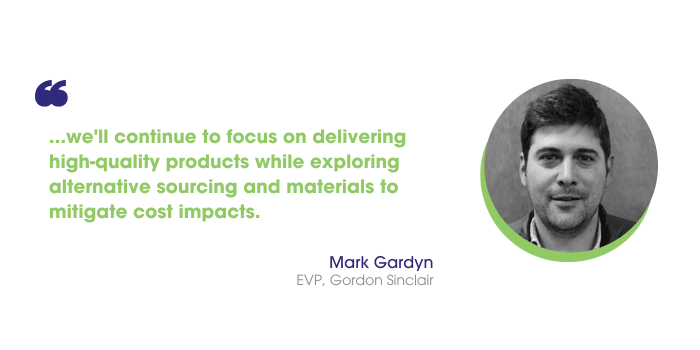
Despite the potential challenges brought on by the tariffs, Mark Gardyn, executive vice president at New York-based supplier Gordon Sinclair, considers it an opportunity to innovate and adapt.
“In the promotional products industry, particularly with drinkware, we’ll continue to focus on delivering high-quality products while exploring alternative sourcing and materials to mitigate cost impacts,” Gardyn says. “This shift encourages us to be more resilient and creative in our solutions.”
Conflicting Views
Members of the Product Responsibility Action Group (PRAG) – a PPAI volunteer group – have different perspectives on the new tariffs.
“While both the Trump and Biden administrations have supported these tariffs, their political messaging is anathema to the economic reality that these tariffs are not only counterproductive, but worse, one of the primary factors in our ever-increasing inflation and a motivator of job loss,” says Angie Morelli, owner of Las Vegas-based distributor Customistic and a member of PPAI’s Government Relations Advisory Council.
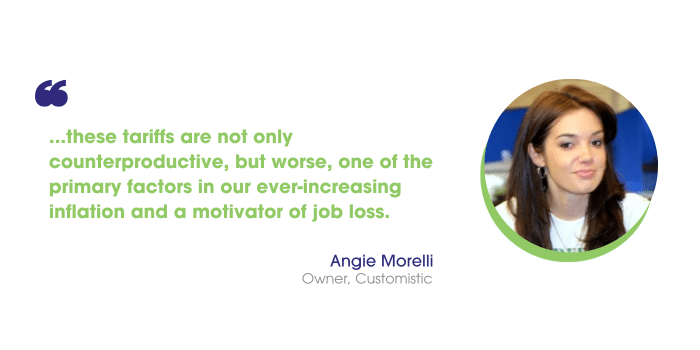
“When domestic availability of ‘like’ products exists in the quantities needed, subverting cheaper Chinese competition, in theory, makes sense,” Morelli says. “The issue with the sweeping Section 301 tariffs is that much of what this is applying costs to can’t be purchased U.S. made at all, or certainly not in the quantities that we’ve been importing them from China for decades.”
Rick Brenner, MAS+, president of business services provider Product Safety Advisors, notes that The White House claims that the Chinese government is undermining low carbon emission U.S. steel and aluminum efforts by subsidizing high carbon emission Chinese steel and aluminum at unrealistically low prices.
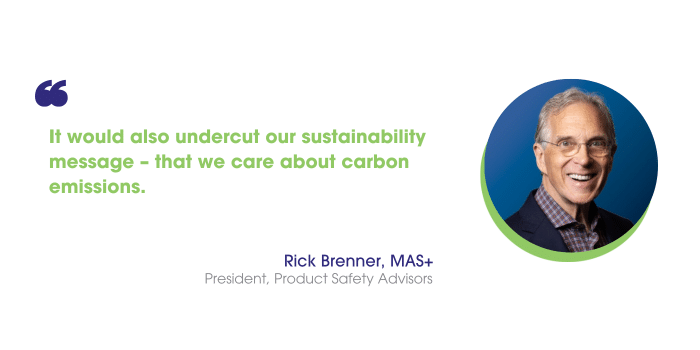
“If this is true, and it appears to be backed up by a four-year review by U.S. Trade Representative Katherine Tail,” Brenner says, “I would hate to see our industry complaining that we should be able to continue to buy cheap aluminum and steel that generates high carbon and is subsidized by the Chinese government to the detriment of American industries, just because we want to keep our costs low. It would also undercut our sustainability message – that we care about carbon emissions.”
Meanwhile, Brian Deissroth, director of national accounts at Edwards Garment – ranked the No. 19 supplier in the 2024 PPAI 100 – argues that tariffs are “simply a tax on American companies and the American people.”

“We can pretty much guarantee that tariffs are here to stay,” says Deissroth, adding that the best business leaders can hope for is a “retroactive renewal” of the Generalized System of Preferences (GSP).
- GSP is the largest U.S. trade preference program that provides nonreciprocal, duty-free treatment enabling many of the world’s developing countries to spur diversity and economic growth through trade, according to CBP.
GSP expired on December 31, 2020, and is pending Congressional renewal under H.R. 7986.
“When Congress reasserts themselves and renews H.R. 7986, it will provide relief for small businesses by creating competition within the supply chain,” Deissroth says. “Reach out to your representative and ask them to support H.R. 7986.”


